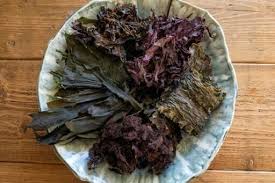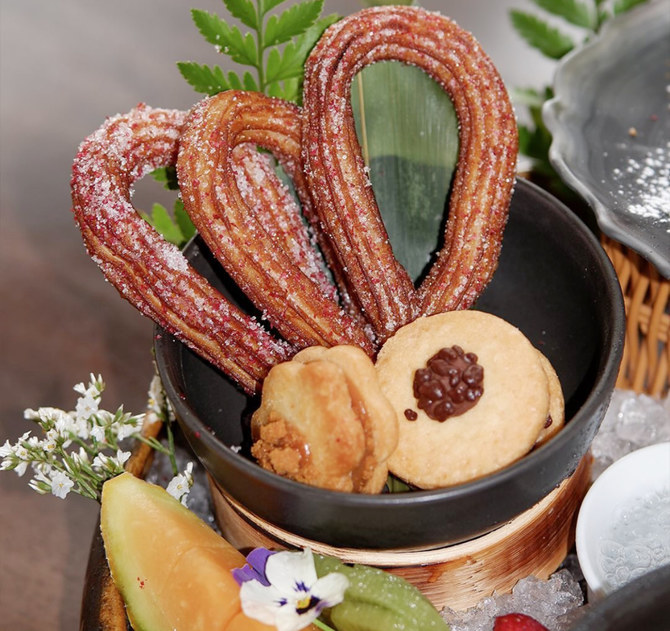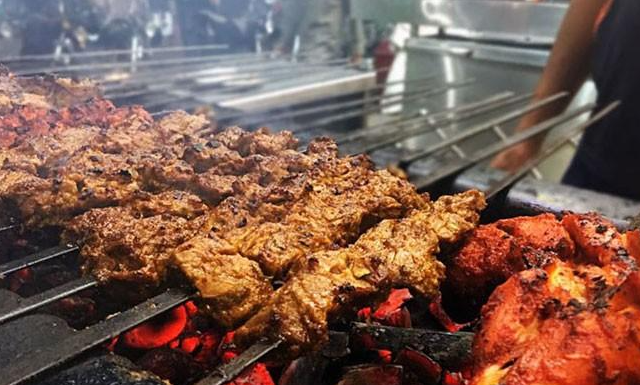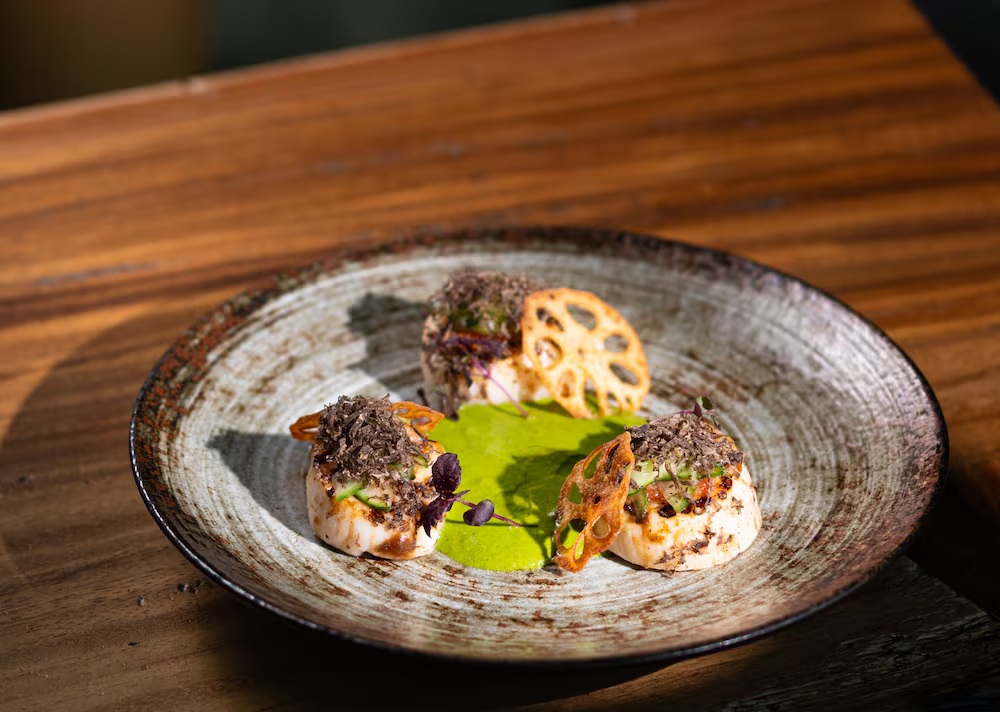
Leyla Yvonne Ergil
As the sesame harvest commences across Turkey, this is the opportune time to provide a synopsis of sesame seeds in Turkish cuisine
‘Tis the season of sesame tilling in Turkey as the precious seed is painstakingly prepared for harvest to be used in a wide variety of iconic dishes in Turkish cuisine. Referred to as “susam” in Turkish, the sesame seed holds a special place in many ceremonial foods in Turkish culture.
These days it is as if I live on “Sesame Street” as my particular road is lined with sesame fields that at this time of year are being prepared for its harvest. If you haven’t yet seen it, the sesame harvest is a laborious yet visually spectacular process. First, the long red-leafed stalks are cut at their base and then positioned and tied into a tipi-like cone, where they will wait for a fortnight or so for the seeds to dry and ripen. When ripe, the sesame plant’s pods will pop open releasing the seed, which is where the phrase “open sesame!” is uttered in “Ali Baba and the Forty Thieves” from the “One Thousand and One Nights” folktales.
Referred to as “shattering,” this characteristic is why sesame is traditionally harvested by hand, which continues to be the predominant process in Turkey. The sesame seeds are best harvested when dry and their tiny stature means the sifting process is also a chore. But what results are wonderful little seeds that are nearly 40% oil, 18% protein and contain B vitamins and the minerals iron, magnesium, calcium, phosphorus and zinc.
Sesame seeds play an important role in Turkish cuisine and feature in many ceremonial and popular foodstuffs. The name “simit” is also synonymous with the seed and can be used to refer to sesame seeds themselves. Simit resembles a bagel in shape in that it is a hand-sized round bread with a hole in the middle that can be sliced down the center and eaten with spreadable or melted cheese. However, that’s where the resemblance ends as the simit is dipped in water with molasses and covered with sesame seeds then baked until crispy and golden brown.
“Kandil simidi” is a sort of mini biscuit variation on the classic simit and it is gifted during the Kandil religious holidays. It is a crunchy, cookie of sorts, with its trademark being that it’s covered in sesame seeds. Sesames and nigella seeds also top the baklava-cut round “Ramazan pide” flatbread that Turks will wait in line for to pop out of the wood-burning oven at bread shops during the holy month of Ramadan.

Once is nice, but twice is better!
Where sesame truly shines in Turkish cuisine is in tahini, “tahin” in Turkish, a thick smooth paste made entirely of toasted, ground and hulled sesame seeds. Yet another painstaking process, to prepare tahini, sesame seeds are soaked in water and then crushed to separate the bran from the kernels. The crushed seeds are then soaked in salted water to allow for the bran to sink. The floating kernels are then skimmed off the surface, toasted and ground to produce the thick oily paste referred to as tahini. There is also the double-toasted variety referred to as “çifte kavrulmuş tahin” that can be found in charcuteries and specialty shops and has an even richer and almost smoky flavor.
Tahini in Turkish cuisine
A staple in Middle Eastern cuisine and most familiarly known for being an integral ingredient in hummus, a dish also served in Turkey where if you’re lucky, they will cover the hummus with pastırma or pine nuts and then roast it until it is bubbling and almost caramelized. There is also the meze called “hibeş,” which hails from Antalya and incorporates tahini with garlic, lemon juice, olive oil, chili flakes and cumin. The Lebanese meze “mütebbel,” which you can find in eastern Turkey, combines tahini with smoked eggplant, garlic, olive oil and pomegranate molasses in a dip adorned with pine nuts.
While as a savory component, tahini is most familiarly used in hummus and as a dressing for a white bean salad, in Turkey, tahini is actually a major component for a number of desserts and confectioneries. Tahini will also be served up regularly in a Turkish breakfast, as one of the most beloved flavor combinations in the country consists of the medley of tahini and pekmez, the latter of which in general, refers to a sweet grape molasses.

Holler for halva!
The first reference to halva spans back to Persia in the seventh century and would refer to confections made from dates and milk or semolina. The Ottoman Turks took the concept to a whole new level inventing the sesame-based version we know of as “helva” today in kitchens referred to as “helvahane” that were devoted to preparing the treat, preserves and other desserts.
Halva comes in a wide variety in Turkey, including those quickly whipped up using flour and semolina as a base. “Tahin helvası” on the other hand is a different story. It consists of a square-shaped block of crumbly crystallized sugar and tahini that melts in your mouth. The mixture literally consists of half tahini and half syrup with soapwort, referred to as “çöven” in Turkish, or marshmallow root used as stabilizers. The mixture is then constantly stirred using a large wooden spoon, with occasional additional flavorings such as cocoa powder or pistachio nuts included in the mix. When it reaches the right airy and stringy consistency due to the fibers breaking down, the mixture is quickly placed in a rectangular mold where it remains overnight to solidify.
Halva is cut up into bite-sized cubes and served for special occasions such as births, circumcisions, weddings, religious gatherings or ceremonies to send off soldiers. There is also a dessert referred to as “fırında helva” in which tahini halva is baked with milk and lemon juice resulting in a deliciously sweet, caramelized gooey mess you can dip pieces of bread into like a fondue. Helva can be found anywhere and everywhere in Turkey, however, there are also local shops devoted to all things sesame and referred to as “helvacı,” from where you can purchase once and double roasted tahini, kandil simidi and of course halva.
There are a number of pastries that involve tahini such as “tahinli çörek,” which is a sweet round roll shaped in a spiral stuffed with tahini and can be found at most bread shops, bakeries and patisseries throughout the country. In central Anatolia, they prepare a baked flatbread referred to as “tahinli pide,” which is covered with tahini paste. There are even variations of baklava in which tahini and crushed walnuts or pistachios form the base.
Sesame brittle, in Turkish “susam krokanı,” is a popular snack and granola bar-sized versions of the sweet crunchy stuff can be found next to nearly every cash register at a market or gas station throughout the country. A nutritious snack to boot, the candy is prepared by roasting whole sesame seeds and honey or sugar, providing a natural protein-packed energy boost when on the go.
“Akide şekeri” is a hard candy in which sprinklings of sesame seeds can be seen inside the pink opaque delectable balls of crystallized sugar. The latest craze in nuts is “susamlı fıstık,” a new take on peanuts in which they are covered in a sweet and crispy coating of sugar and sesame seeds. Last, but certainly not least, is the “Ottoman tahin pekmezli küp,” a sundae of sorts consisting of authentic Kahramanmaraş ice cream made with mastic, a variety of halvas including tahini halva, grape molasses and crushed pistachio nuts.
Courtesy: Dailysabah
The post Open sesame! All about this special seed in Turkish cuisine appeared first on The Frontier Post.








